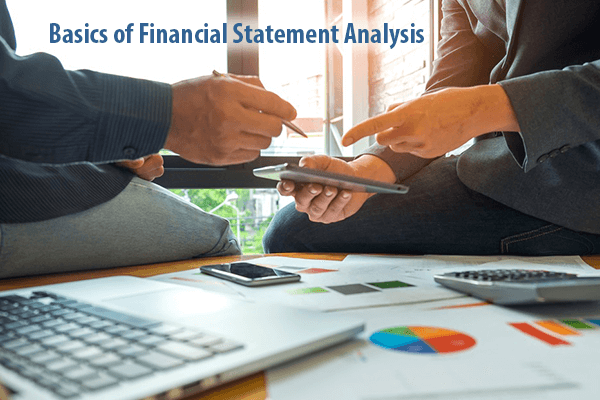



Financial Accounting which is also known as Accounting is the pillar of banking, financial services or any such business entity which is engaged in any productive activity. At www.ursaminor.in we offer a financial accounting course online in India to our students. As is often the aim, course objective of financial accounting is to strengthen students’ knowledge of accounting.
We run a Financial Accounting Course Online in India at our website. This Financial Accounting Course explains:
1. Double Entry method of Book Keeping: In this method, every transaction has two aspects, debit and credit. Also, for every debit there is equal and opposite credit. It helps to prepare a balance sheet.
2. Accounting Equation: Assets=Liabilities + Owners’ Equity. This is universally known as accounting equation and is taught under financial accounting courses. Without understanding this equation course objective of financial accounting can’t be achieved. As a matter of fact, the balance sheet holds the basis of the accounting equation. To arrive at this equation (figures on both the sides of equal to sign will have to be exactly equal). To proceed:
1. Locate the total assets of the business (on the balance sheet as on a particular date (in our country, majority of the balance sheets are as at 31st March). 1st April to 31st March being the Financial Accounting period. In a bank’s balance sheet assets will be on the right side while for others, they will be depicted on the left.
2. Total all the liabilities, listed on the opposite side of the assets column (in the balance sheet of a bank, first there are liabilities (on the left side of the balance sheet)
3. Locate total shareholder's equity (also known as capital or share capital).
4. Add capital to the total liabilities.
5. Total assets will equal the sum of liabilities and total equity. Each side of this accounting equation is known as the balance sheet size. To learn this is important for financial accounting.
Types of Accounts and Golden Rules of Accounting
Course Objectives of Financial Accounting Online:
1. Providing Financial Information to Stakeholders: Primary objective of Financial Accounting is to make available to all its stakeholders financial information in order to run the business in a competitive and efficient manner. To achieve this purpose books of accounts are to be maintained in a most transparent and orderly manner. The business requires to keep its records of accounting of income and expenditure in a methodical way. These books of accounts which are digitally maintained these days should be easily approachable and authentic. The process of maintain financial accounting in such a manner is known as Book Keeping. Book Keeping has to be clean, within the framework of the internal and external policies and up to date. This has to be invariably under Double Entry Book Keeping method of accounting.
2. Providing Financial Information to Lending Banks or to the Proposed Lenders: Proper accounting is essential, if money is to be borrowed for the purpose of business. The lender will only agree to lend money when he is satisfied as to the solvency of the borrower. Information available from books of accounts is the means of measuring such solvency.
What Are the Principles for Financial Accounting?
Financial Accounting principles are required under Generally Accepted Accounting Principles (GAAP).
Basic Financial Accounting Principles
Here’s a list of some universal financial accounting principles
Historical Cost Principle – The principle requires companies to record the purchase of goods, services, or capital equipment at the purchase price. Assets then remain in the balance sheet at their historical value minus depreciation or at the original price without being adjusted for fluctuations in market value.
Revenue Recognition Principle: The Principle requires companies to record revenue at the time of raising invoice and not when it is actually realised / collected.
Matching Principle – This states that all expenses must be matched and recorded with their respective revenues in the period that they were incurred instead of when they are paid. This principle works with the revenue recognition principle ensuring all revenue and expenses are recorded on the accrual basis.
Full Disclosure Principle – The practice requires that any knowledge that would materially affect a stakeholder’s decision about the business must be disclosed in the footnotes of the financial statements. This prevents companies from hiding material facts about accounting practices. This also warns the reader about contingencies.
Cost Benefit Principle – The principle limits the required amount of research and time to record or report financial information if the cost outweighs the benefit. Thus, if recording an immaterial event would cost the company a material amount of money, it should be forgone.
Conservatism Principle – Under this principle, book keepers should always error on the most conservative side possible in any situation. This prevents accountants from over estimating future revenues and underestimated future expenses that could mislead financial statement reader.
Objectivity Principle – The rule states that financial statements, accounting records, and financial information as a whole should be independent and free from any pride or prejudice.
Consistency Principle – Here, all accounting principles and assumptions should be applied consistently from one period to the next. This ensures that financial statements are comparable between periods and throughout the company’s history.
Fundamental Financial Accounting Concepts
1. Business Entity Concept – Here, the idea is that the business and the owner of the business are separate entities and should be accounted for separately. This concept also applies to different businesses. Each business should account for its own transactions separately.
2. Going Concern Concept – Under this concept, the businesses need to be treated as if they are going to continue to exist forever. This means that we must assume that the business isn’t going to be dissolved or declare bankruptcy.
Types of Accounts used in Financial Accounting: There are three types of accounts in financial accounting-
1.Real Accounts
All assets of a firm/company, whether tangible (can be seen with the naked eye) or intangible (can not be seen with the naked eye), belong to this first category.
Tangible real accounts Few examples of tangible real accounts are building, machinery, stock, land, etc.
Intangible real accounts Few examples of such real accounts are goodwill, patents, trademarks, etc.
The golden rule of financial accounting for real accounts: Debit What Comes In / Credit What Goes Out.
The transaction below shows the interaction of two different real accounts: one is ‘furniture’ and the other is ‘cash’, both of them are assets of the company and hence classified as real accounts.
Book Keeping (Financial Accounting) For Purchase of Furniture for Rs. 10,000 in cash
Account Debit/Credit Financial Accounting Rule Applied
Furniture Account Debit Rs. 10,000 Real Account. Debit What Coms In
Cash Account Credit Rs. 10,000 Real Account. Credit What Goes Out
2.Personal Accounts
Second category among these three types of accounts are personal accounts which are related to individuals, firms, companies, etc. Few examples are debtors, creditors, banks, promoters’ savings or current accounts, cash credit or overdraft account, accounts of dealers or customers, accounts of vendors or suppliers or capital account etc.
These are again of the following types:
Natural personal accounts: As the name suggests these belong to the accounts of human beings. Rekha Rawat’s Account, Pooja Gupta’s Account, Janhavi Bhavsar’s Account.
Artificial personal accounts: These are also personal accounts but are created by law. Examples are, corporate bodies and institutions. LLPs, Firms, Pvt Ltd, Public Ltd companies, clubs, charities etc.
Representative personal accounts: Accounts which represent a certain person or a group directly or indirectly. E.g. Let’s say that Diwali bonus is paid in advance to an employee – a bonus prepaid account will be opened in the books of accounts. This bonus prepaid account is a representative personal account indirectly linked to the person.
The Golden Rule of Financial Accounting for this category of accounts is: Debit the Receiver and Credit the Giver.
Example
The transaction below demonstrates the interaction between two different personal accounts, one of which is a private limited company and the other one being a bank.
Book Keeping (Financial Accounting) For Purchase of Furniture for Rs. 10,000 in cash
Account Debit/Credit Financial Accounting Rule Applied
ABC Company P Ltd Debit Rs. 24,000 Personal A/c Debit the receiver
Bank A/c Credit Rs. 24,000 Personal A/c Credit the giver
3.Nominal Accounts
These are the accounts which are existing in name only. Result of these accounts is either profit or loss for the business and is carried over to the capital account of the business at the end of the financial year. They are financial accounts related to expenses, losses, profits etc. Examples are: purchase account, salary account, sales account etc.
The Golden Rule for the Nominal Accounts is: Debit all expenses and losses, Credit all income and gains.
Example : The following example shows a transaction where a nominal account interacts with a real a/c. Purchased silver for Rs. 60,000 paying cash. Financial Accounting is as follows:
Accounts involved Debit/ Credit Rule Applied
Purchase Account Debit Rs. 60,000 Debit All Expenses
Cash Account Credit Rs. 60,000 Real A/c. Credit what goes out
Our students appreciate our financial accounting course as the best online accounting course for the beginners. We expect that you have achieved the objective of financial accounting course as outlined by us.
Q.1 Which institute is the best for a Diploma in Accounting and Finance?
Ans. There are a lot of private and public universities all across India that offer this particular course. Some of the top universities offering these courses are GD Goenka Academy, IIMT Group of Colleges, Shri Bhausaheb Vartak Arts, Commerce And Science College, The Maharaja Sayajirao University of Baroda, Times and Trends Academy, NIIT, Vista Academy, Anuna Education Etc.
Q.2 Is it worth getting a Diploma degree in Accounting and Finance?
Ans. Yes, it is worth it. Accounting and financial jobs are in high demand these days, and you can score yourself several job positions in various top-level companies with this degree. The annual salary is excellent and will help you have a healthy bank balance and a stable life in future.
Q.3 Is this course valid for jobs?
Ans. Yes, it is, a diploma in accounting and finance does come useful when applying for jobs. There are several job opportunities for those who have completed this course. Job opportunities like book-keeping clerk, billing clerk. Tax accountant, cost accountant, etc. are available for those who have pursued a diploma in accounting and finance. It is just as valid as a BCom degree. You can remain assured of its validity.
Top Searches:
Financial accounting course | course objectives of financial accounting | best financial accounting course | financial accounting online course | financial accounting course syllabus | financial accounting courses in india | accounting and financial management courses | advanced financial accounting course outline | best online financial accounting course | certificate course in financial accounting